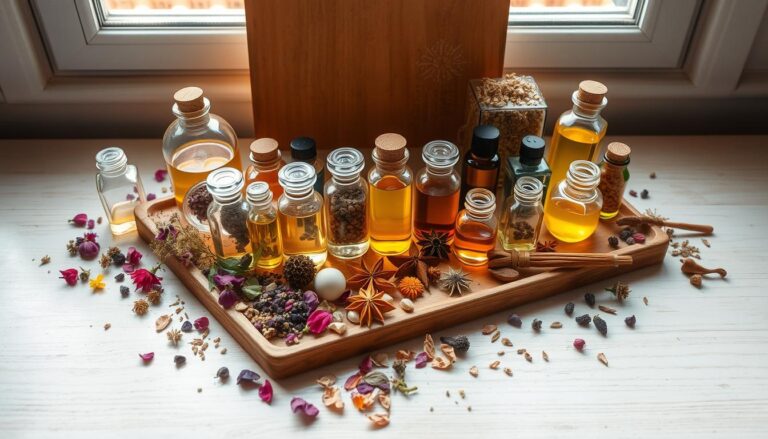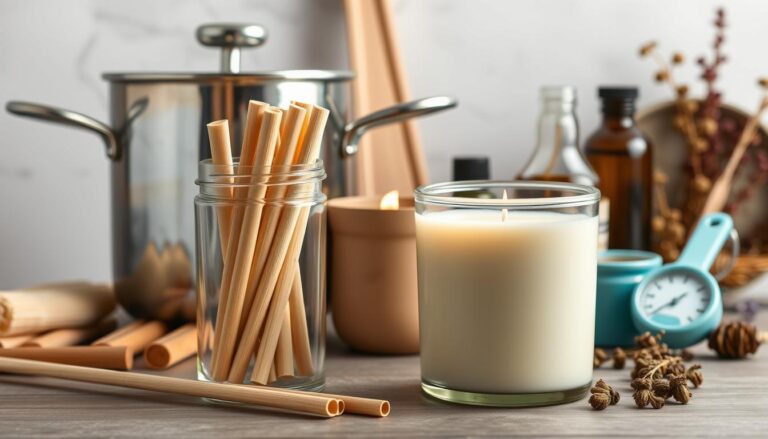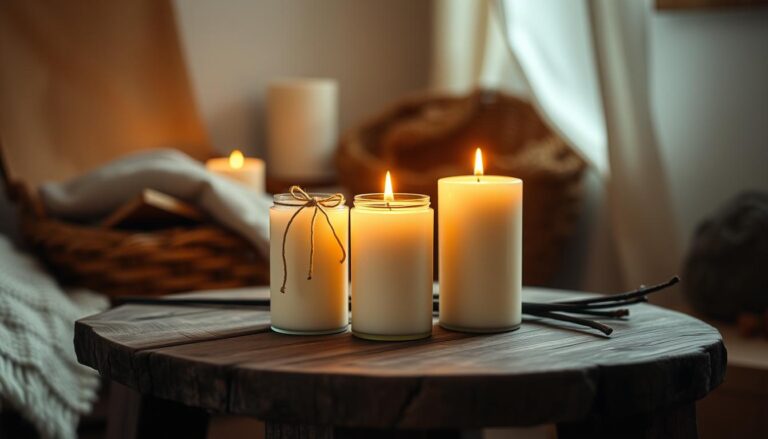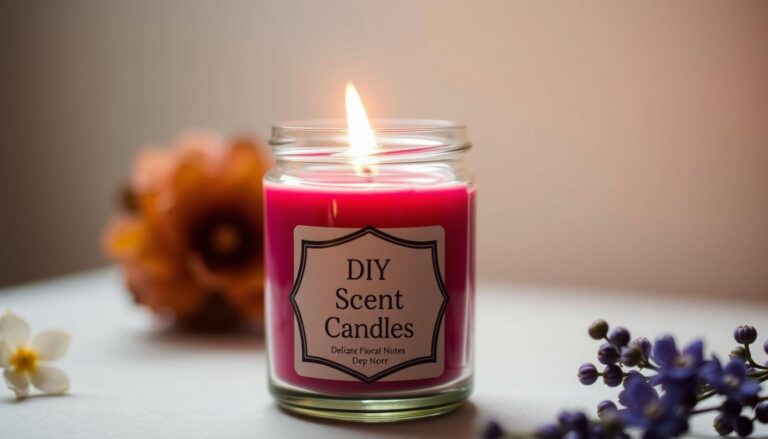Ever wish you could eliminate stale odors in your space without harsh chemicals or expensive products? What if you could make a natural DIY freshener spray using essential oils?
This guide reveals a method to create your own aromatic solution in just a few minutes.
Through the use of natural essential oils, you’ll craft a versatile formula that works anywhere from musty closets to gym bags.
Unlike store-bought alternatives, this is a safe alternative for kids and pets. The best part? It costs pennies per batch compared to commercial sprays.
You’ll appreciate how quickly it neutralizes odors while leaving a subtle, clean fragrance.
Key Takeaways
- Create a customizable air refresher using three basic ingredients
- Save money compared to store-bought chemical sprays
- Control ingredients for family and pet safety
- Eliminate odors in laundry areas and living spaces
- Prepare the solution in under five minutes
- Adapt scent strength to personal preference
Make your own Odor-Eliminating Freshener Spray
Here’s the recipe for a 100ml bottle.
Ingredients:
- 15 drops Tea Tree oil (antibacterial, antifungal)
- 10 drops Lemon oil (fresh, cuts through odors)
- 10 drops Eucalyptus oil (strong, clean scent)
- 5 drops Peppermint oil (sharp and deodorizing)
- 1 tbsp (15 ml) vodka or high-proof grain alcohol (emulsifier + disinfectant)
- 85 ml distilled water
🔸 Total Essential Oil: 40 drops (~2 ml)
This is a 2% dilution, safe and strong for air and surface use.
Instructions:
- Add vodka (or alcohol) to a clean 100 ml amber spray bottle.
- Add essential oils and shake well to blend.
- Fill the rest of the bottle with distilled water.
- Shake vigorously before each use to re-disperse oils.
What It Does:
- Neutralizes stale and sour smells
- Kills odor-causing bacteria and fungi
- Leaves behind a brisk, fresh scent that lingers
Usage Tips:
- Spray into shoes, gym bags, closets, or car interiors.
- Mist pet beds or fabrics (always test in small area first).
- Avoid direct spraying on leather or silk.
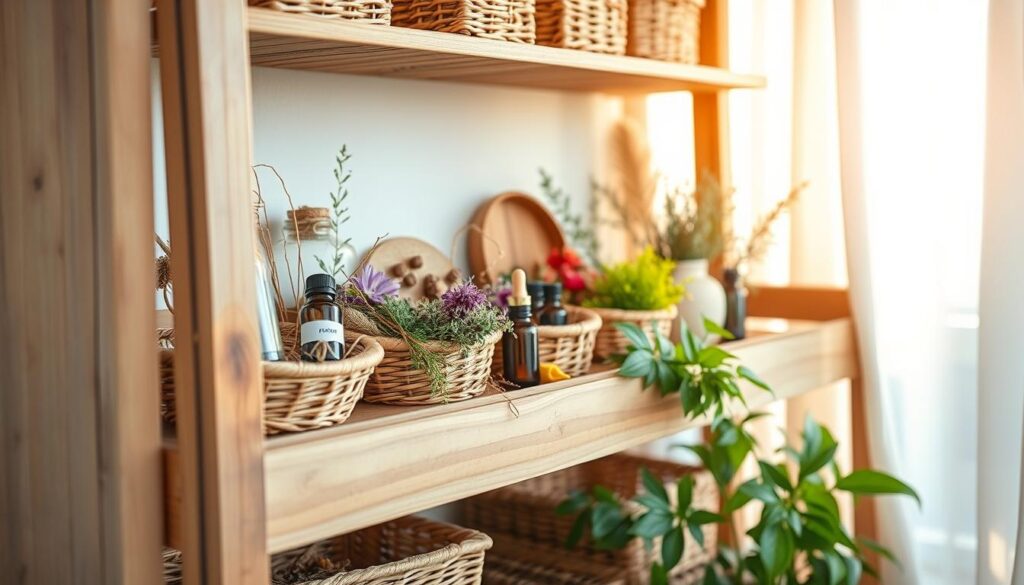
DIY freshener spray: Benefits and Best Practices
Creating a healthier home environment starts with the choices you make for everyday products.
Natural ingredients and proper storage methods not only boost effectiveness but also protect your family and surroundings.
Let’s explore how simple habits can elevate your homemade solution’s performance.
Choosing Natural Ingredients for a Safe Home
Commercial air care products often hide questionable chemicals behind vague labels. Your homemade version skips synthetic fragrances and harsh preservatives.
This means no hidden toxins in playrooms or pet areas.
Essential oils like lemon or lavender do more than smell nice. They offer natural cleaning properties without irritating sensitive lungs.
Pair them with alcohol or witch hazel for a formula that’s tough on odors but gentle on surfaces.
Caring for Your Spray Bottle and Mixture
Glass bottles outshine plastic containers for two reasons. Oils won’t degrade the material, and you avoid chemical leaching.
Airtight lids keep your mixture fresh longer while reducing environmental waste.
Store your blend in cool, shaded spots to preserve its scent. Wipe the nozzle weekly to prevent clogs.
Alcohol preserves the mixture naturally, but shaking before each use ensures even distribution.
With proper care, one batch lasts over a month. You’ll spend less time mixing and more time enjoying crisp, clean rooms.
Plus, reusable glass supports sustainable living—no single-use plastics required.
Creative Customizations & Essential Oil Blends
Unlock endless aromatic possibilities by mixing nature’s fragrant treasures.
Your homemade solution becomes a personal signature when you combine oils that reflect your style and needs.
Experimenting with Unique Scent Combinations
Start with single oils like rosemary essential oil. Its earthy aroma enhances focus while calming nerves.
Pair it with cedarwood for a woodsy base or vanilla for warmth.
Our tested favorite mixes 10 drops rosemary, 8 cedar, and 5 vanilla in a 4-ounce bottle.
For spaces needing extra freshness, try antiseptic blends. Combine 15 drops lemongrass with 10 eucalyptus oil drops.
Add 5 drops peppermint for invigorating laundry areas. Citrus lovers can mix orange and lemon oils (20 drops each) for sunlit kitchen vibes.
Tips for Adjusting the Strength of Your Aroma
Control intensity through oil concentration. Use 30-40 total drops per cup of liquid for subtle scents in bedrooms.
Boost to 60 drops for bold aromas in gym bags or pet zones.
A 16-ounce version works beautifully with 50 lavender and 40 rosemary essential oil drops.
Remember: oils separate over time. Shake your room spray vigorously before each use.
Test new combinations on paper strips first.
Craft Aromatic Solutions
Crafting your own aromatic solutions has never been simpler or more rewarding.
With just a few ingredients you have unlocked a reliable method to refresh any space.
This approach puts you in charge of every ingredient, creating safer environments for loved ones and pets while cutting costs over time.
Personalize your blend by mixing oils that match your mood or room needs.
A quick shake in your glass bottle ensures even distribution before each spritz. Store mixtures away from sunlight to preserve their vibrant scents longer.
Your new skills offer more than fresh air. They’re a step toward sustainable living.
Experiment with citrus bursts for kitchens or calming lavender for bedrooms.
The resources shared here make restocking supplies effortless, supporting your journey toward a naturally inviting home.
Keep reading: Floral Spray Recipes ideal for Spring Cleaning.
FAQ
Can I substitute witch hazel with something else?
Yes! If you don’t have witch hazel, try using vodka or rubbing alcohol. Both help preserve the mixture and ensure the oils blend evenly. Just avoid using plain water alone, as it won’t disperse the oils effectively.
Are these sprays safe around pets?
Some essential oils can be harmful to pets. Avoid tea tree, citrus, or eucalyptus oils if you have cats or dogs. Stick to pet-safe options like lavender or chamomile, and always spray in well-ventilated areas away from their bedding.
How long will the scent last after spraying?
The aroma typically lingers for 1–2 hours, depending on airflow and room size. For a stronger effect, add a few extra drops of your favorite oil blend. Shake the bottle before each use to refresh the scent.
Can I use plastic bottles for storage?
Glass bottles are best, as citrus or cinnamon oils can degrade plastic over time. If you only have plastic, opt for PET or HDPE materials and avoid storing the mix for longer than a month.
What’s your go-to oil combination for a fresh smell?
Try mixing 10 drops lemon, 5 drops peppermint, and 5 drops rosemary for a crisp, energizing vibe. For relaxation, blend lavender and vanilla with a hint of cedarwood. Adjust ratios to match your preference!
Why does my spray leave residue on surfaces?
This happens if the oils aren’t fully mixed. Add a bit more witch hazel or alcohol to help emulsify the ingredients. Wipe surfaces with a damp cloth after spraying if needed—especially on wood or glass.

